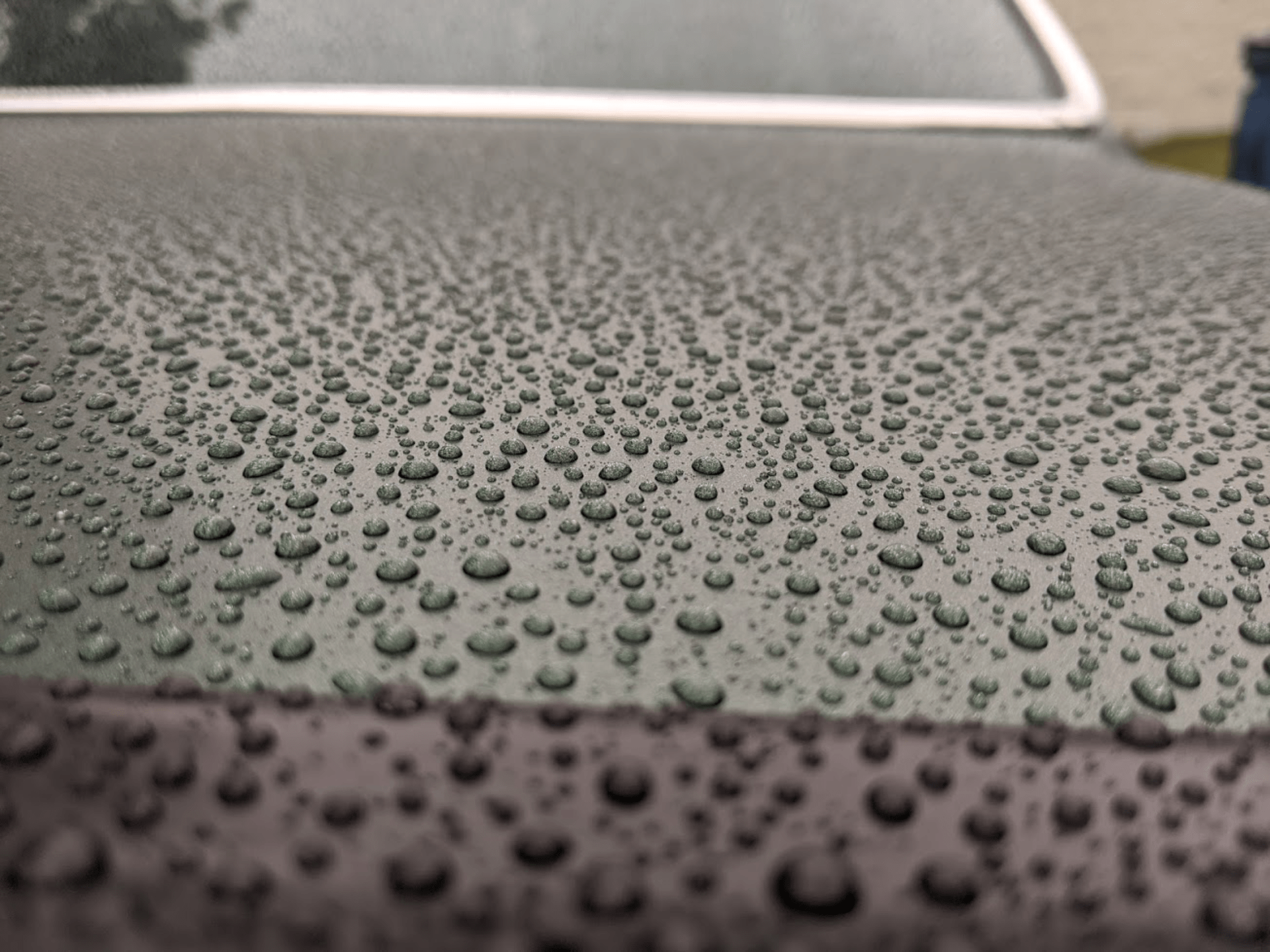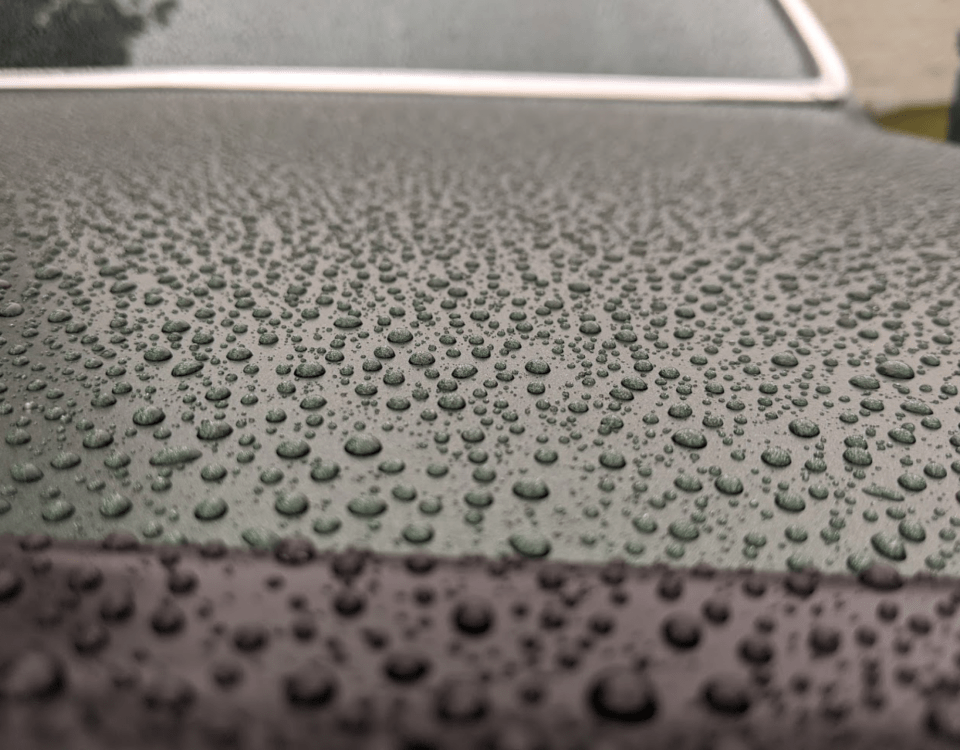
Washing my coated car the right way
April 12, 2021You want your car to look as good as it did when you drove it off the showroom floor. However despite your best efforts maintaining and washing; the scratches, chips, marring, and stains start to spread. It starts to take longer and longer to wash it clean and the paint begins to dull & fade.
Everything is constantly on the attack against the surface of your car. Mud, dust, dirty rain, water spots, brake dust, road grime all start sticking across the panels adding even more to the task of washing your car. Monotonous, time-consuming, and boring car wash just isn't as fun as it was when it was all new.
You don't want to take it through an automatic carwash, but you also grow tired of the upkeep of wax or sealants and never getting the shine out of it that it once had.
Here is where we talk about "glass" or Ceramic Coatings.
What is it?:
While today the word coating has been stretched pretty thin, here we will discuss the main types of coating technology in the "NANO" sector and original application of the genre of long-term protectants.
The easiest description of a ceramic coating is that it is a protective layer that is applied to a surface and once cured has the natural characteristics of "glass."
These coatings are primarily found in either a Silica Dioxide or Silica Carbide formulations with a couple different formulations here and there. These tiny particles are extremely fine and form a thin layer that is completely invisible to the naked eye. They are able to fall into the natural pores of the paint and once cured create a surface that is hydrophobic, UV & Chemical resistant, and able to handle much higher temperatures than a wax or a sealant.
What options are there?
Most are just catching the buzz around "Coatings" but they have been around the detailing industry for several years now.
Because of the nature of these premium coatings, they have been reserved for enthusiasts or owners of premium vehicles.
You have basically 2 options when deciding you want your surface coated:
*Professional application *DIY Consumer Kits
Professinal Application
Professional coatings must be applied by trained and certified professionals. The nature of these chemicals in the concentrations in professional coatings is difficult and the equipment and expertise required to make the cost prohibitive to some.
Pre-prep and professional preparation can take 1 to 5 days depending on the condition of the paint, size of the vehicle and the packages you select. To take the time to properly decontaminate the surface, perform necessary paint correction or enhancement, then completely remove polishing oils and prepare the surface to accept the coating and ensure ultimate longevity. Pro level coatings are not forgiving, if the temperature or humidity changes so does the nature of the product. Finding an installer with experience, proper training, and honest about what to expect is absolutely vital.
The upside to professional coatings is they often come with manufacturer warranty and shop reputation at stake. Companies like Ceramic Pro support their coating so much they validate the warranty against your vehicles CarFax reports and have 3rd party testing performed against claims.
DIY:
Recently, a range of exciting consumer level products has been entering the marketplace. This new era of protectants has opened up the coating world to casual drivers who are less concerned about "show-room" quality and more about ease of cleaning and protection against the elements.
Specially formulated to be less sensitive to install than the pro-grade counterparts. They can be installed with little to no experience. The quality and durability of these products can vary, but in comparison to the professional applications, they are obviously a lot more accessible to the average driver.
ADVANTAGES:
Relatively easy to apply Extremely cost effective Visible resultsDISADVANTAGES:
Takes effort to properly prepare a car A lot of poor knockoffs Minimal guidance and instructions for a proper install Exaggerated benefitsOne of the main advantages to this becoming more mainstream is that it is creating the need for most ceramic based "everyday" vehicle care items. Soaps, Quick Detail Sprays, toppers, as well as ceramic coating jeweling agents.
What does it do?
With good reason, Ceramic Coatings have gained in popularity over the years. Benefits and durability simply unheard of in the automotive industry. But even with all of the features and benefits, there are some items to be aware of.
What does it NOT do?
There are a lot of misconceptions regarding "coatings" and what this type of protection provides. Let's start off by saying this: Yes, you have to wash your vehicle. No, your vehicle is not bulletproof. Coatings are not the magical end all be all solutions to every potential hazard your vehicles surface will be exposed to.
They do not stop rock chips, they do not prevent water spots, they do not replace the need for maintenance and care. Coatings can and will wear down so much like your clear coat, the better you take care of the coating the longer it will last.
Coating Myths
We always welcome people to stop by and discuss their options, and during our conversation, we always like to take a second and discuss the reality of our world. Here are a few of our favorite Myths that we often hear:.
Default
1) Scratch ProofThere are a ton of suppliers that love to exaggerate the scratch resistance of Ceramic Coatings even going so far as to say they are even rock chip resistant.
Just like that first Timex that you bought that was water resistant and you went swimming and it was toast. Resistance does not mean proof.
Ceramic Coatings are thin and are typically stronger than the OE clear and will be less prone to the same type of superficial damage. Most newer coatings are rated at 9H on the pencil hardness scale. This is, however, the highest possible rating and is not to be confused with the MOHS scale of hardness.
2) Coatings don't require maintenanceThis is a big one! Stating that you don't have to wash or can simply hose it off and it is going to be PERFECT is simply not going to happen. A coating will dramatically cut down on time needed to obtain clean and will stay cleaner for longer.
What coatings replace is your LSP, last step protectant. This traditional wax or sealant application that needed to be performed every few weeks takes a tremendous amount of time over the course of ownership. We generally see about 50 hours per year time saved. How much is your time worth?
3) Coatings are PermanentWhile this is both true and false, it still deserves MYTH status. There are a ton of companies that use the term coating as a blanket statement and this adds confusion to this topic. The vast majority of ceramic coatings are semi-permanent and with proper care and average exposure should last roughly 2 years.
The SiO2 based all in one polish vs a multi-layered coating system is going to have drastically different results. Do not be fooled by these cookie cutter "coating" terms
4) They are easy to applyWhile the new coating technology will continue to advance application ease. However, this is normally something that has a tradeoff somewhere.
The process for application of a true ceramic coating is far from "simple" or easy. An easy to apply "coating" such as a SiO2 spray acts much like a spray sealant with polymer technology. These can be applied easily and paint correction does not necessarily need to be done. These also tend to last only months.
The process to perform paint enhancement, then prep the entire surface to be free of oils and then properly apply, level and ensure high spots, all while keeping up with humidity and temperatures.
Are coatings worth it? Yes, absolutely, for most cars. The marginal investment made up front for the assurance over the next few years to come let alone the pure time saving experienced is definitely one of the main things that people that once get coated, want everything coated!
The glory of this is that coating technology continues to advance and its applications will continue to expand. We like to consider Coating a lifestyle. Coatings work great on more than just paint. Wheels, trim, plastic interior, leather, suede, metal, stone, even wood! Shoes, purses, appliances, phones, glasses, watches, heavy equipment, and machines all have an application to increase the ease of clean and durability that of high-end coatings have to offer.



